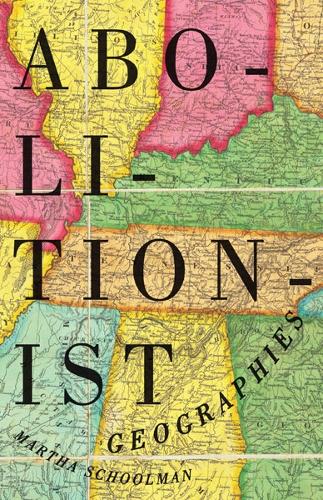
Abolitionist Geographies
(Paperback)
Publishing Details
Abolitionist Geographies
By (Author) Martha Schoolman
University of Minnesota Press
University of Minnesota Press
1st January 2015
United States
Classifications
Professional and Scholarly
Non Fiction
Social and cultural history
Ethnic studies / Ethnicity
Human geography
304.20973
Physical Properties
Paperback
240
Width 140mm, Height 216mm, Spine 25mm
Description
In Abolitionist Geographies, Martha Schoolman contends that antislavery writers consistently refused standard geographical terms, instead expressing their dissenting views by appealing to other anachronistic, partial, or entirely fictional northsouth and eastwest axes. Schoolman reveals abolitionist literature's explicit and intentional investment in geography as an idiom of political critique, by turns liberal and radical, practical and utopian.
Reviews
"Abolitionist Geographies offers exciting new ways of thinking about place, time, politics, and form in the antislavery writings of such important antebellum writers as Emerson, William Wells Brown, Martin Delany, and Stowe. Drawing on recent work in diasporic and hemispheric studies, Schoolman shows how key writers of the time made use of spatial experimentation to conceive of the nation well beyond North and South sectionalism. Abolitionist Geographies poses a fresh challenge to scholars of the period to address matters of nation and geography more complexly." Robert S. Levine, author of Dislocating Race and Nation
"Whatever else it does in relation to the historiography of antebellum abolition - and indeed it does much - Schoolmans book teaches us to see this reopening of abolitionist time as an opening of abolitionist space as well."Antipode
"Martha Schoolman's Abolitionist Geographies is a valuable contribution to the growing body of scholarship that explores connections between the literary and the geographic."Journal of Historical Geography
"In Schoolmans skilled reading of its geographies, we now have a map to the abolitionist imagination."Journal of American Studies
"Schoolman offers a nuanced, historically and geographically informed understanding of abolitionist discourses, and foregrounds the fine details and rough edges that often compromise cursory readings of abolition. [Abolitionist Geographies] is without doubt an important contribution to the renewed scholarly interest in abolitionist literature."African American Review
"Martha Schoolmans Abolitionist Geographies contributes significantly to the history of the antislavery movement between British emancipation in 1833 and John Browns 1859 Harpers Ferry raid."Journal of American History
"Sophisticated and meticulously researched."American Literature
"A nuanced topography that highlights the contradictory, the quotidian, and the contextual strategies ever present in nineteenth-century abolitionist geographies."Common-Place
"Abolitionist Geographies offers an exciting model of a micropolitical approach to American literatures, where hierarchies, solidarities, and fissures among racial-ethnic groups and what we think of as their literatures emerge in relation to and against regions multinational histories."MELUS
"A timely and engaging study of spatial imaginaries and geographical practices in U.S. antislavery literature. "Emerson Society Papers
"Schoolmans ambitious chronology compellingly argues for the importance of space to abolitionist thought, and demonstrates that geography is a means to remap established genealogies of the abolition movement, and to rethink its canonical literature."Years Work in English Studies
Author Bio
Martha Schoolman teaches in the English Department at Dickinson College. She is coeditor of the essay collection Abolitionist Places.
